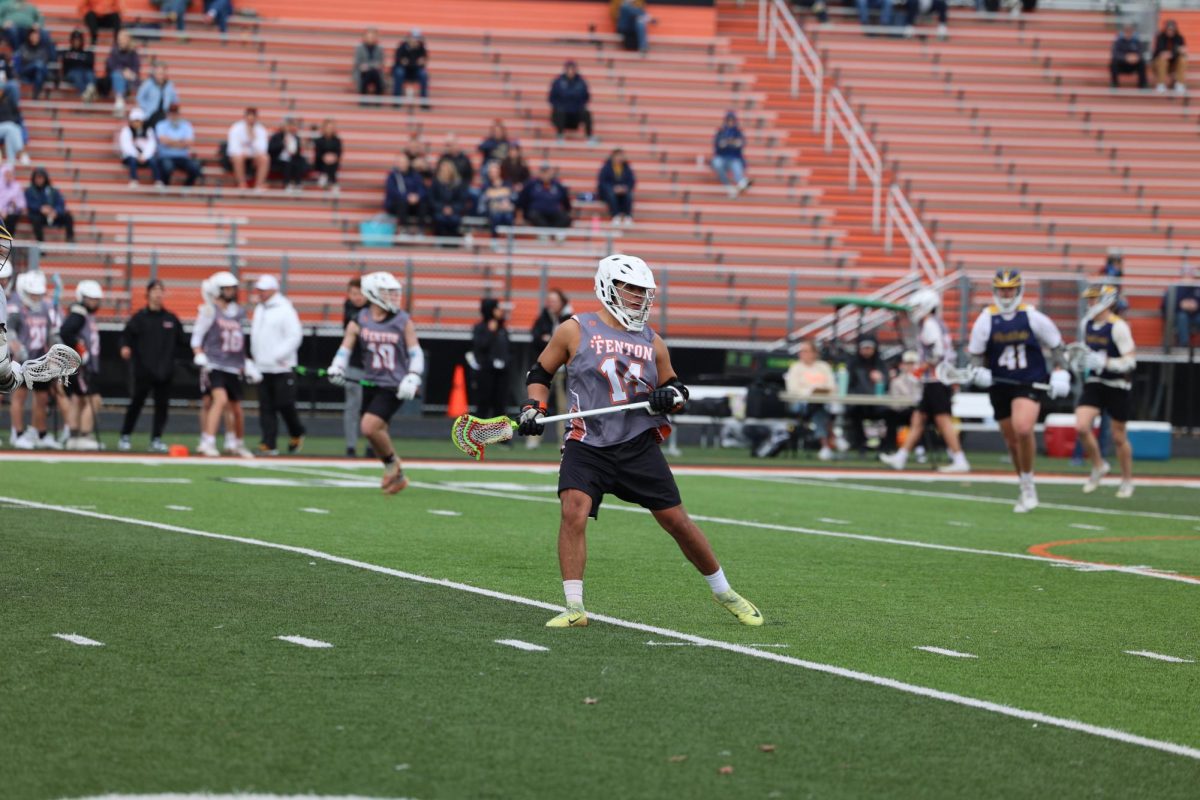Athletes struggle to balance athleticism, body image for society
April 5, 2017
Body image. Body shaming. Too skinny. Too overweight. These topics have been brought up in the media a lot. As it occurs mainly in sports, the athletes’ main goal is to achieve their optimal body image with their coaches’ help and positive support.
“It’s not that coaches are supporting or promoting negative body images,” athletic director Mike Bakker said. “In fact, they are talking to kids about what is needed if they’re going to be at certain positions in certain sports.”
As body image is talked about in the media more these days, many try to define the term “body image”.
“How often do we read stories about criticism of the fashion or modeling industry for promoting a ‘super-thin-is-in’ type of image?” athletic trainer Mitch Smelis said. “When a huge majority of the population won’t ever come close to that body image.”
Coaches are trying to help build students up for success by monitoring their diets and workout schedules.
“All of our coaches to some extent have conversations with kids about ‘Hey, listen, if you want to get faster, or you want to be better in that position, you have to be stronger,’” Bakker said. “‘Or, you’re going to need to lose some weight, or you’re going to need to eat healthi er, or you’re going to have to pay better attention and take care of what’s going in more often.’”
er, or you’re going to have to pay better attention and take care of what’s going in more often.’”
Even students who are not athletes may be concerned with body image. A recent study by Park Nicollet Melrose Center found that 78 percent of 17 year old girls are unhappy with their weight.
“I certainly know, and I’m aware, that there are issues with kids and body image,” Bakker said. “I understand that. And I would even say that I guess in the most rudimentary means of the term ‘body image’, I had the same concerns as a high school athlete. I never thought of them as this huge negative connotation, even when I was in school back in the ‘90s.”
The standard for an “ideal” body is something that varies between people and often is difficult to define.
“What is an unhealthy vs. a healthy body type? Who defines that?” Bakker said. “I could tell you, in my own mind, what defines an unhealthy body type, but it is going to be different from what another person thinks of as an unhealthy body type. Just because you look at a piece of paper that says that person is 6’2” and 250 lbs, vs. this guy over here who is 6’2” and 175, is one of them a bad body type, or an unhealthy body type?”
Bakker thinks that the media talks and shames many women and men for not being skinny enough or not being buff enough.
“I think some of the stereotypes about body image come from mass media, commercials, and clothing models, although I think television and some other forms of mass media are trying to do a better job of some of those things, and showing a truer reality of a cross mix of everything,” Bakker said. “I think adolescents sometimes don’t know where to start to ask a question if they are struggling with a body image. It might be because they feel that they are overweight, or underweight, or not muscular or strong enough.”
Society may never know if there is one true, ultimate healthy body image.
“There is no one body type, there is no one body image. Everybody is built genetically different,” Bakker said. “There is a fine line between being a stereotypical body image issue, and what is the reality of what do I need to do in order to achieve my goals.”
Students and student athletes who feel concerned about their body image or their weight should talk to their counselors or Mr. Bakker.









